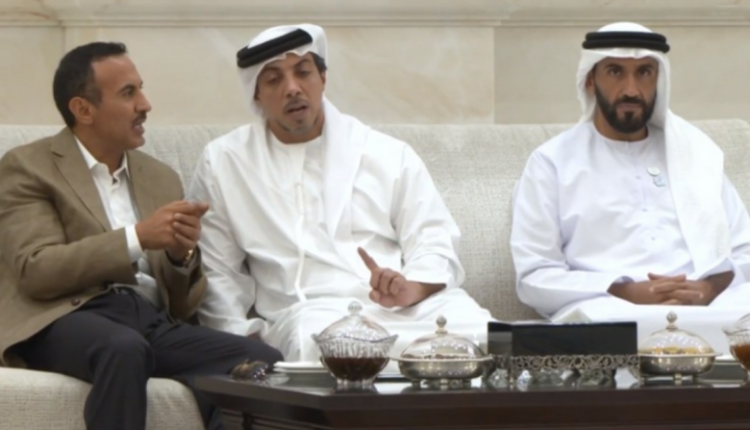In Its Attempt to Recycle Treachery… The Aggression Coalition Exploits Burned-Out Cards to Fracture Yemeni Unity!
Under the headline “Recycling Treachery and Attempts to Fracture Unity,” a new conspiracy emerges, woven by the coalition of aggression. Its sole objective: to penetrate Yemen’s steadfast internal front after failing to secure any direct military victory on the ground. Unable to break Yemeni resolve—embodied in the September 21 Revolution—the coalition has returned to old, discarded tactics, falsely believing they might still offer a glimmer of hope.
Between Treachery and Resistance: A Vast Divide
Distinguishing between the loyal National Congress and the treacherous pro-Saleh faction is not merely a partisan issue, but a strategic necessity for protecting the gains of the September 21 Revolution and preventing Yemen from sliding back into dependency and betrayal. Between the faction that sold Yemen to its enemies and the principled national wing, the Yemeni people today stand fully aware of who betrayed them and who stood firm.
The coalition’s desperate attempts are embodied in efforts to rehabilitate the image of certain figures long branded as traitors—commonly referred to as “the Afashists.” These individuals are widely regarded as instruments of betrayal, synonymous with subservience to foreign powers. Though their credibility has been permanently burned in the eyes of the Yemeni public, the coalition, fleeing from the reality of its failures, now seeks to recycle them through shady political projects and alliances.
Saudi Arabia’s Return Through the “Afashist” Gate
Amid its military failures, new dimensions of the coalition’s plans are surfacing, with Riyadh attempting to return to the forefront of the conflict—not through direct confrontation, but by fueling internal chaos. After feigning the role of mediator, Saudi Arabia seized on rising regional tensions following “Operation Al-Aqsa Flood” to resume its schemes.
With Yemen’s naval strikes evolving into an international dilemma troubling Washington and Tel Aviv, Riyadh intensified its meetings with Western envoys to shape a new strategy. These diplomatic maneuvers, coupled with U.S. airstrikes and the “Prosperity Guardian” coalition, reveal Saudi Arabia’s intent to reinsert itself into the war—this time by reviving “Afashist” figures who still dream of dragging Yemen back into the darkness.
But for the Yemeni people, their betrayal is already documented—most notably in the failed December 2017 coup attempt in Sana’a, which sought to overturn the balance of power in coordination with the coalition. For Yemenis, this was not an isolated incident but conclusive proof of treachery.
Emirati Ambitions in Socotra
Parallel to Riyadh’s maneuvers, Abu Dhabi’s ambitions have become increasingly blatant, extending beyond political manipulation to territorial control—most notably over the strategic island of Socotra.
UAE actions on Socotra bear the hallmarks of covert occupation: direct military presence, tourist flights, and the establishment of military bases in cooperation with the U.S. and Israel. Statements like those of Abdulkhaleq Abdulla, former adviser to the Abu Dhabi crown prince—calling the push for “autonomy” in Socotra a “historic step”—only confirm these intentions.
This agenda exposes Abu Dhabi’s designs to detach the island from Yemen, undermining national sovereignty while propping up local proxies who serve as little more than executors of Emirati policy.
Recycling “Ahmed Ali”: Attempting to Split the GPC
In line with these efforts, the coalition has also moved to rebrand Ahmed Ali, son of the late Ali Abdullah Saleh, once commander of the Republican Guard. After years of forced seclusion in Abu Dhabi, his recent movements in Riyadh and Cairo suggest an orchestrated attempt to bring him back into Yemen’s political arena.
Meetings with Yemeni tribal and social figures in Cairo reveal efforts to fracture the General People’s Congress (GPC), exploiting its social base to create artificial alternatives aligned with the coalition. But for the Yemeni people, Ahmed Ali remains a figure tied to foreign agendas—another burned card.
Revolutionary Awareness: Yemen’s Impenetrable Wall
These schemes crash against the solid wall of revolutionary awareness entrenched in Yemeni society since the September 21 Revolution. The people understand that unity is their shield, and any attempt to fracture their ranks serves only their enemies.
Mass demonstrations across Sana’a and other free provinces, affirming Yemen’s unwavering stance on Palestine, testify to this resilience. Likewise, the firm alignment of tribal leaders with Sayyed Abdul-Malik Badr al-Din al-Houthi underscores a collective commitment to resistance, refusing any compromise on sovereignty.
In this context, Emirati maneuvers in Socotra and attempts to recycle figures of betrayal amount to little more than desperate acts. They reveal the coalition’s failure to confront Yemen head-on and its reliance on discarded tools long rejected by the people.
Conclusion
The aggression coalition’s frantic efforts to recycle traitors only highlight its deep-seated failure and desperation. Meanwhile, the Yemeni people—unified behind their revolutionary leadership—are building a new state rooted in dignity and sovereignty.
Every attempt to revive the burned cards of the past collapses against Yemen’s steadfast will. The September 21 Revolution has permanently reshaped Yemen’s trajectory, ensuring that betrayal and dependency are relics of a past the nation has left behind.

